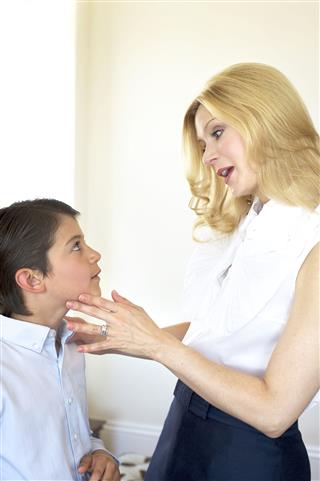
Operant conditioning is an important learning method for behavior (that which influences the way in which we behave). Certain examples of the same will help you understand this concept well enough, and in the sections that follow, we will try to get into the details of the same. Continue reading to understand the workings of this interesting concept.
Did You Know?
Operant conditioning, also referred to as instrumental conditioning, was first described by psychologist B.F. Skinner.
Think about this for a minute … how did we learn to behave the way in which we do? How did we learn that a particular behavior is good behavior and some other behavior is bad? Our parents and the society taught us, yes? But what were the tools that were used for driving the behavior home?
According to psychologist B.F. Skinner, the way in which we behave is influenced and learned by drawing an association between the way in which we behave and the consequences that our behavior leads to. This learning of behavior is termed as operant conditioning, and is an integral subject in the study of behavioral psychology.
In the following sections, we will use certain operant conditioning examples to help make the concept clearer.
What is Operant Conditioning
Operant conditioning is the process of learning behavioral patterns which are based on certain stimuli from the environment, such that, the external stimuli leads to a certain behavior. A human being knows the kind of consequences that a particular behavior will lead to, and therefore, to either encourage or discourage that consequence, he will behave in a particular way.
It has four sub-parts:
- Positive Reinforcement
- Negative Reinforcement
- Positive Punishment
- Negative Punishment
Positive Reinforcement
Positive reinforcement occurs when a particular behavior strengthens or increases in the hope of experiencing a positive action or behavior.
For Example:
A student will continue to do his/her homework because he/she knows that he/she will be rewarded with a candy (action) or is praised (behavior) by his/her parents or teachers if he/she completes it. This is a great example of positive reinforcement on school kids.
Negative Reinforcement
In this form, a particular behavior strengthens or increases in the hope that a negative consequence can be avoided.
For Example:
The elevator in a building makes a lot of noise, so a person decides to take the stairs. Taking the stairs helps avoid the negative action of dealing with the noise.
Positive Punishment
In this concept, a particular behavior pattern decreases so as to avoid dealing with something unpleasant later.
For Example:
A student tries to avoid turning in late for class so that the teacher does not insult/shout.
Negative Punishment
In this, a particular behavior pattern decreases so that a positive stimulus or object is not taken away or removed.
For Example:
A child might stop throwing tantrums after his/her favorite toy is taken away after each tantrum.
While positive and negative reinforcement help in increasing or strengthening a particular behavior, positive and negative punishment help in decreasing or discouraging it.
Examples in Children
There are certain operant conditioning behavior examples in the classroom as well as in a home set up that you can observe in children. Here are a few examples.
Example # 1
A child learns to clean his/her room after being rewarded with extra TV time, every time he/she cleans it. (Positive reinforcement)
Example # 2
A child will clean his/her room in order to avoid being nagged by his/her mother (where the nagging is the negative stimulus), and will end up having a clean room. (Negative reinforcement)
Example # 3
After hitting a classmate, the child is made to sit separately and no one is allowed to talk to him/her. This will ensure that the child never ever hits any of his/her classmates again. (Positive punishment)
Example # 4
A child is stopped from watching his/her favorite cartoon show because he/she gets into a fight with his/her sibling (where the cartoon show is the positive stimuli), and he/she learns to avoid getting into a fight henceforth. (Negative punishment)
Examples in Adults
Learning behavior through operant conditioning does not stop at childhood; in fact, it continues throughout a person’s life. Here are some examples.
Example # 1
Every time the wife makes her husband’s favorite dish, he gets into a good mood and takes her out for a romantic evening. (Positive reinforcement)
Example # 2
A person decides to take a different route on his/her morning walk to avoid a garbage dump and therefore increases his/her running speed and the distance that he/she covers. (Negative Reinforcement)
Example # 3
A student’s cell phone is taken away and he/she is given a scolding, after the cell phone starts ringing in the middle of a lecture (where the shouting becomes the negative stimuli). The student will learn either to put the phone on silent mode or never to get it in class. (Positive punishment)
Example # 4
A person stops teasing his girlfriend about a certain issue after she gives him a silent treatment. (Negative Punishment)
These operant conditioning examples show us a pattern which dictates that most behavior patterns that we learn are not merely as a result of our thoughts and conscience, but due to the fact that there are negative and positive stimuli in the environment that influence the way in which we act and behave.









